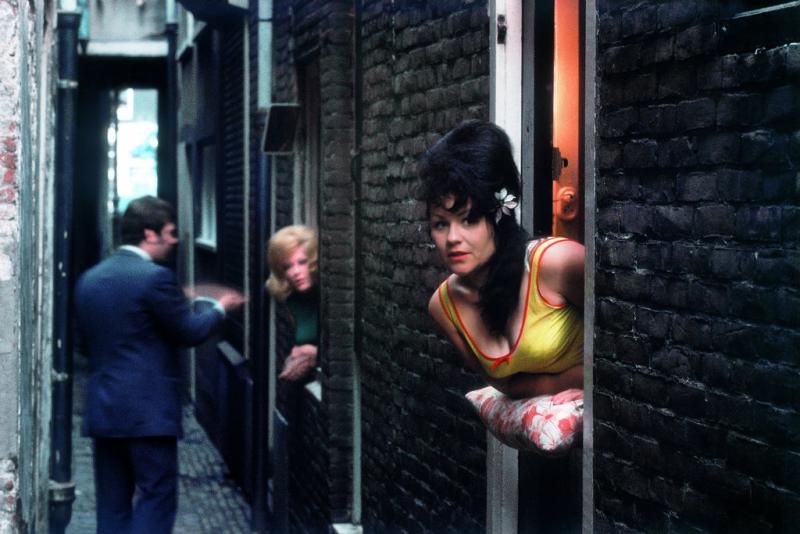What to do in Amsterdam
Today we decided to tell you about Amsterdam – a city that has become the main symbol of liberalism. People who were here first, lost – too many tourist attractions.
Ride the bus “Floating Dutchman”
More recently, travelers looked into Amsterdam, literally torn to pieces. After all, how to catch just a few days available for inspection beautiful capital of the Netherlands, run on all 90 islands, six hundred bridges, ride on the 165 channels and look at everything? Enterprising Amsterdam authorities found an ingenious solution: they launched an amphibious bus. Hybrid boats and land transport, equipped with an electric motor, first, as usual, travels through the streets of the city, and then immersed in one of the channels. The two-hour tour “Floating Dutchman” is designed so as to cover as many attractions. Otchalivaya from cafe “Van Gogh”, an unusual construction for 50 seats, lowered the water using a special platform near the Science Centre “Nemo” and crisscrossing canals Nieuwe Herengracht and Audeskhans. Overboard leisurely swim Skinny Bridge and adjustable Magere Brug, the Theatre Royal and the city hall.
Go through the Dam Square
During its long history rectangular heart of the Dutch capital and saw the terrible tragedy and joyous season. The main square of Amsterdam grew from medieval dam on the Amstel River, and behind it was born and the city. Dam Square is always bubbling with life: here was conducted brisk trade in fish and moored vessels, and completing a market day, everyday people to decide disputes in the City Hall, later became a royal palace. In 1837, on the parade ground appeared Zocher Stock Exchange, in 1856 m – War Memorial “Unity”, and in 1914 – the store “De Beyenkorf.” In the XIX century the central square turned into a national symbol: here were held rallies and fairs. Ironically known area has led to the tragedy, forever inscribed in the history of the Netherlands: May 7, 1945 during a meeting of soldiers-liberators city residents were killed by a burst from a machine gun hidden on the balcony of a nearby building. Modern “dam”, connecting the Damrak, Rokin, and Nivendeyk Damstrat – is a venue that can not be changed. Gothic church located here Nieuwe Kerk, Royal Palace, National Monument, and just a stone’s throw from the quarter De Wallen.
See the royal palace
At the residence of the Dutch monarchs huge decorating Dam Square, has a secret. Royal palace that was used first as the Town Hall and reputed to be the largest office building in Europe, almost became the eighth wonder of the world. Erection of magnificent buildings, decorated in the best traditions of Dutch classicism, it took 17 years and has resulted in multiple materials: some piles, foundation restraint was used more than thirteen thousand. Imposing yellow sandstone walls have witnessed many events. In the Hall of the tribunal, which is decorated with bas-reliefs luxury, to administer human destiny in the Royal Hall met the world’s elite, and from the central balcony of newly minted monarchs and still greet his people. Most of the year, when the palace is not held official events royals, it opened as a museum. The tour includes 17 examination rooms, one of the world’s best collections of decorative art and furniture ages 17-18, Jan Lievens works, Govert Flinck and Ferdinand Bol.
Buy flowers in the market on the Singel Canal
It’s no secret that the Netherlands is the world’s largest supplier of flowers. Statistics show that for the year in the famous exchange of live plants Alsmeer quarter billion sold nearly a billion tulips and roses! In the Netherlands, conducted the most vivid and memorable parades of flowers, for example, in celebrations of the Day of the Queen, used by about 100 million inflorescences. The most unusual flower market in the world is located on the waterfront Singel, more precisely, on the water surface parallel to the channel. History of the world’s only bazaar begins on barges in the XVII century. While seeking to expand the market, merchants traveling on water and traded directly with boats. In the middle of the XIX century was based on Blumenmarkt Sint Lyusinvale, but by the end of the century moved into the Singel canal, becoming a magnet for tourists. Modest by the standards of the Dutch market has only 15 outlets, but pleases the eye with an incredible variety of colors. It sold tulips all shapes and colors, daffodils, hyacinths, potted plants and bulbs, and even dozens of species of cacti. Rows of floating splendor open daily from 9am to 5.30pm.
Visit the red light district De Wallen
If you are curious inhabitants of Amsterdam, how to get to the Red Light District, they will surely guide you in De Wallen. For seven centuries, the most famous of the three officially existing seats in the Dutch capital for pleasures, located near the old church Oude Kerk, is in great demand. Glass windows for each of the three hundred small studio apartments exhibited “goods” on display: for an agreed fee, half-naked ladies are ready to fulfill every whim. In the business they are investing not only beautiful body and soul: all rights reserved Amsterdam courtesans union. Sex, built here in the cult, provides a decent income priestesses of love: their earnings varies from 3 to 15 thousand euros per month. In De Wallen regularly held “open days”, during which you can learn the history of the Dutch prostitution and free peek behind doors gnezdyshek love. In the Red Light District only one taboo: here you can smoke hashish and rent ladies for love-making, to touch guns of all shapes and sizes at the Museum or buy sex toys for comfort, but strictly forbidden to take photos on the memory.







